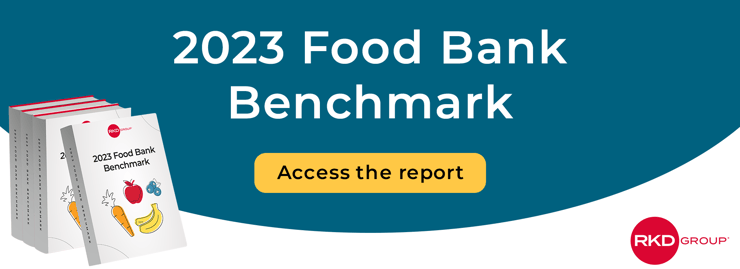If you’re a food bank fundraiser, “people-first language” and DEI principles are likely top of mind for you when creating fundraising materials.
While not a new concept for many of us, the last few years have highlighted the need for inclusive and equitable language more than ever before. Unfortunately, fundraising messaging from years past can be filled with unconscious bias and implicit assumptions, creating an “us against them” feeling.
Today, food banks can navigate through this by focusing on humanity and compassion in their messaging.
Why food banks should focus on people-first language
Old fundraising approaches may unintentionally victimize people facing hunger.
Food banks—and their missions—are built to benefit everyone, no matter their differences or their circumstance. And your language and messaging should be reflective of that. People-first language and DEI principles help give dignity and respect to the communities we serve, helping promote a sense of belonging.
While many of us recognize that this is a change we should all be making, it can be difficult to understand just how to do it.
In this blog, I’m sharing a few tips for how food banks can begin to incorporate more equitable and empathetic tones into their fundraising materials, becoming more inclusive of the people they serve.
1. Emphasize humanity.
While a person may be going through a challenging circumstance in their life, this need doesn’t define them. The reality is, hunger can happen to any of us, and often the situation is beyond a person’s control.
To emphasize humanity, avoid otherizing people or implying someone who needs help is “less than.” Instead, humanize the people you serve by honoring each person’s story and show diversity that genuinely reflects your community.
Rather than using terms such as “the hungry” or “the needy,” instead use “neighbors in need” or “people who are experiencing hunger.”
2. Be authentic.
It’s easy to sensationalize or exaggerate in fundraising copy, but that can take away from the authenticity of who you are as a food bank.
Your messaging should be relatable and conversational and based around the need or the problem your food bank is solving.
3. Avoid paternalistic language.
Paternalistic language implies that we know what’s best for people in need or that someone can’t care or manage for themselves.
Avoid phrases like “saves” or “benefits” and instead incorporate terms like “helps,” “serves,” or “supports.”
Most importantly, keep an open mind as you navigate this shift in creative and messaging. As food banks, it’s critical that we are respecting the feelings and needs of the individuals we serve.
If you’d like to learn more about people-first language, our Group Creative Director, Erin Albitz, recently hosted a short webinar on this topic.






Leave a comment: